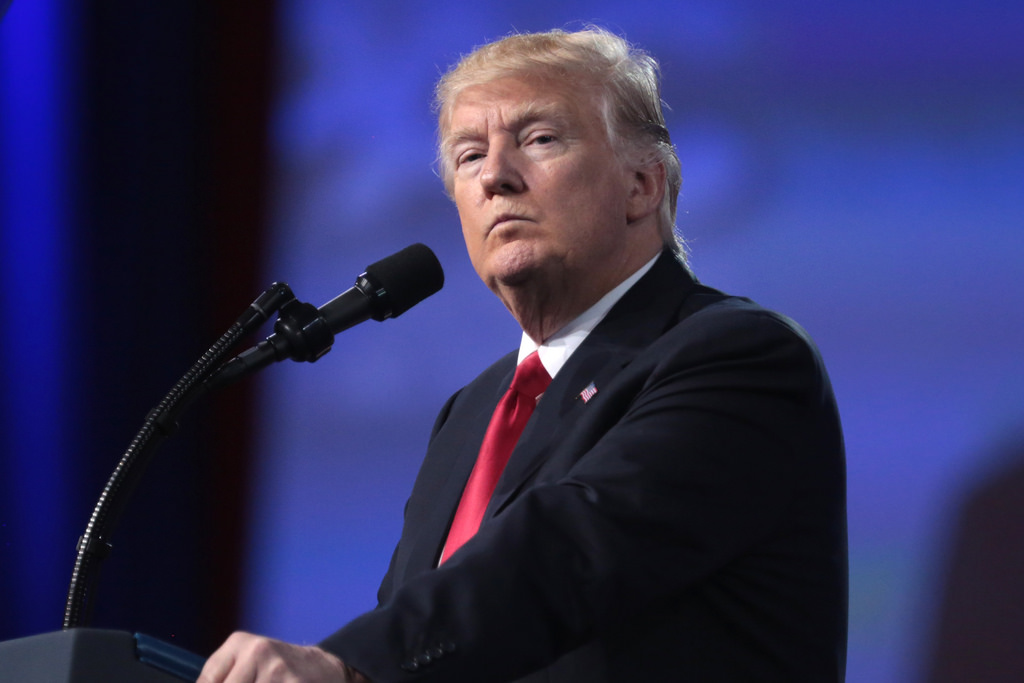
Let’s take a look at what the president would like to do.
Before we start this blog, a disclaimer: President Trump’s budget proposal is dead on arrival on Capitol Hill.
Although the president officially unveiled his full proposed budget for fiscal 2018 last week, it is ultimately up to Congress to decide how to spend the government’s money. Final federal budgets often look very different than those offered up by the White House — even when the president’s party is also in charge of Congress — so it’s unlikely that a lot of what Trump wants to do will end up happening.
Still, Trump’s budget provides some insight into what he’d like to do if he was calling all the shots, so it’s worth examining. We took a dive into the proposal to focus on some of the big picture things that would impact American manufacturing, although we stress that this is by no means an exhaustive list. We also avoid many of the issues already covered in-depth by others.
The Good

Trump proposes a $59 million budget for the office of the U.S. Trade Representative (USTR), a 5.3 percent increase from last year. This makes sense, given that USTR Robert Lighthizer has already been tasked with some big duties, including the much-anticipated renegotiation of the North American Free Trade Agreement (NAFTA).
It’s also a sign that the White House intends to make good on at least some of its trade promises, as Lighthizer is expected to be key player when it comes to trade, along with Commerce Secretary Wilbur Ross and Peter Navarro, director of the new White House National Trade Council.
Trump is also seeking a $5.5 million increase for trade enforcement at the Commerce Department and a $4.5 million increase for the International Trade Commission’s enforcement and compliance section. As Reuters reported, this would help create 29 new jobs tasked with combatting unfairly traded imports, which could strengthen our ability to effectively enforce our trade laws.
On the infrastructure front, Trump’s budget would fully fund the Highway Trust Fund at the Transportation Department until fiscal year 2021, although a cumulative cut of $96 billion would follow between 2021 and 2027.
And at the Interior Department, the Drinking Water and Clean State Revolving Funds would see an uptick to $2.3 billion, while the Water Infrastructure Finance and Innovation Act program would remain level at $20 million. Both of these programs are a part of the effort to repair and replace our aging water infrastructure, something that’s been a focus in the wake of the Flint Water Crisis.
Meanwhile, the Labor Department would see a $1 million increase in funds for apprenticeship grants, an essential part of workforce training efforts to ensure the next generation of workers is prepared for advanced manufacturing jobs.
The Bad

Although Trump’s budget calls for increase support for fighting unfair imports, it also aims to eliminate some of the work being done to promote exports. The Global Markets Division at the International Trade Administration — which oversees export promotion — would see its budget cut by $43 million. The Trade and Development Agency and the Overseas Private Investment Corporation, both of which focus on exports and overseas development opportunities, would be completely eliminated.
The Transportation Department, meanwhile, would see a 13 percent overall cut in funding, which might negatively impact the effort to rebuild America’s infrastructure. Trump’s proposal calls for eliminating TIGER grants, which provide funding or credit assistance for surface transportation infrastructure, for example. That would constitute a cut of nearly $500 million.
Trump also seeks to cut Amtrak’s funding by $630 million, a 55 percent decrease. New Starts transit grants also would take a huge cut of nearly $1 billion.
At the Energy Department, the Office of Energy Efficiency & Renewable Energy — which houses the Advanced Manufacturing Office — would see its funding cut from $2.1 billion to $636 million. Trump also wants to end funding for the Advanced Research Projects Agency by 2019.
The Army Corps of Engineers would see its budget fall to $5 billion, a 16.3 percent drop. The Corps’ construction account would be cut more than 50 percent to $1.02 billion, and there would be a 29 percent cut to its investigation activities — the type of work needed to lay the groundwork for future projects.
And while Trump seeks to fund some key water infrastructure programs (see above) he also is aiming to eliminate funds for rural water and wastewater at the Rural Utilities Service at the Agriculture Department.
The Ugly

Trump wants to eliminate federal funding for the Manufacturing Extension Partnership (MEP), a widely respected public-private network of centers that help small and medium-sized manufacturing companies. Since its founding in 1988, MEP has helped manufacturers create or retain more than 86,000 jobs and led to $9.3 billion in sales.
Likewise, the Trump budget aims to eliminate the Economic Development Administration, which works to create jobs and economic growth in communities nationwide by promoting innovation and regional collaboration.
Trump also is seeking to cut the budget by 70 percent for Manufacturing USA, a network of nine manufacturing innovation institutes located across the country (and six more are planned by the end of this year).
This Obama administration initiative has widespread bipartisan support, and It’s also on the cutting-edge in technological research, from 3-D printing to semiconductors to even creating cells, tissues and organs, potentially leading to advancements like the ability to manufacture new skin for soldiers injured on the front lines. Manufacturing USA is still a work in progress, but the potential for big things is there — we should see it through.
The Trump budget also calls for significant cuts to programs under the Workforce Innovation and Opportunity Act, overseen by the Labor Department. The cuts are distributed unevenly, but include more than $500 million in cuts to dislocated worker employment and training activities.
The Bottom Line

To repeat: Trump’s budget proposal is just an idea — Congress will ultimately have the final say, and federal funding for fiscal 2018 might wind up being very different from what Trump is proposing.
But the Trump budget does provide a window into the White House’s thinking. It seems that the president favors strong trade enforcement (good), and while he says he wants to improve America’s infrastructure, he’s also looking to gut some of the established programs that would help get the job done (bad). Meanwhile, Trump does not prioritize programs designed to create new manufacturing opportunities (the ugly). These programs matter, as they lay the foundation needed to spur innovation, support new and existing manufacturers and help provide workers with the skill sets they need to take on advanced jobs.
Trade enforcement is hugely important — you won’t hear any argument from Team AAM on that point. But we also must take steps to strengthen manufacturing here at home, including by investing in our infrastructure and funding programs like MEP and Manufacturing USA. We hope that Congress will agree.

